He probado muchas salas para pastas, pero una de mis favoritas es la salsa puttanesca. Siempre me han gustado las anchoas, las alcaparras y las aceitunas, y mezclar esos sabores en una salsa para pasta, como no la voy a tener en mi lista de salsas favoritas. Hay varias versiones de salsa puttanesca, pero hoy te comparto mi versión. Me gusta respetar las recetas tradicionales y aprender de ellas, para luego adaptarlas a mis gustos y a los ingredientes disponibles en donde vivo.
I have tried many pasta sauces, but one of my favorites is puttanesca sauce. I've always loved anchovies, capers and olives, and mixing those flavors in a pasta sauce, how could I not have it on my list of favorite sauces. There are several versions of puttanesca sauce, but today I share with you my version. I like to respect traditional recipes and learn from them, and then adapt them to my tastes and the ingredients available where I live.
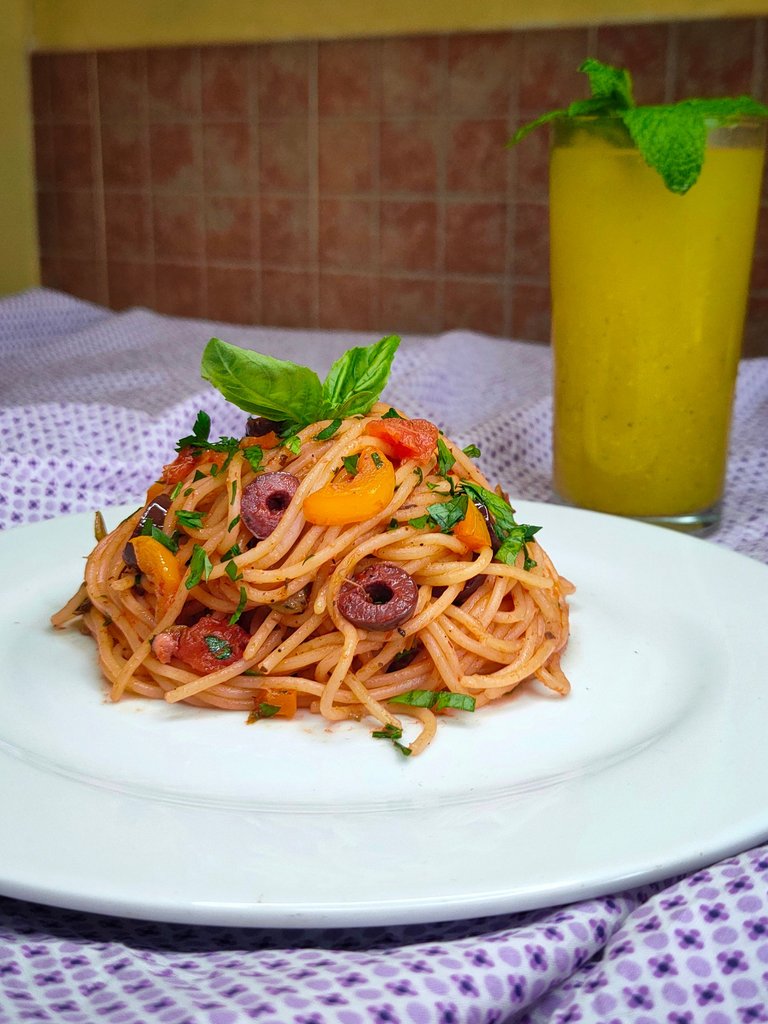
Para esta versión, utilicé pimentón amarillo, para agregar un color extra a la salsa. También utilicé aceitunas negras y verdes, también agregué 1/2 cucharadita de chile seco rostizado y con las semillas, para dar ese toque picante a salsa que siempre le va bien. Es una salsa muy aromática, con sabores fuertes, ya que la anchoa aporta mucho a esta salsa y yo agrego un poco más de lo habitual.
For this version, I used yellow bell pepper to add extra color to the sauce. I also used black and green olives, and added 1/2 teaspoon of roasted dried chile with seeds, to give that spicy touch to the sauce that always goes well. It is a very aromatic sauce, with strong flavors, since the anchovy adds a lot to this sauce and I add a little more than usual.
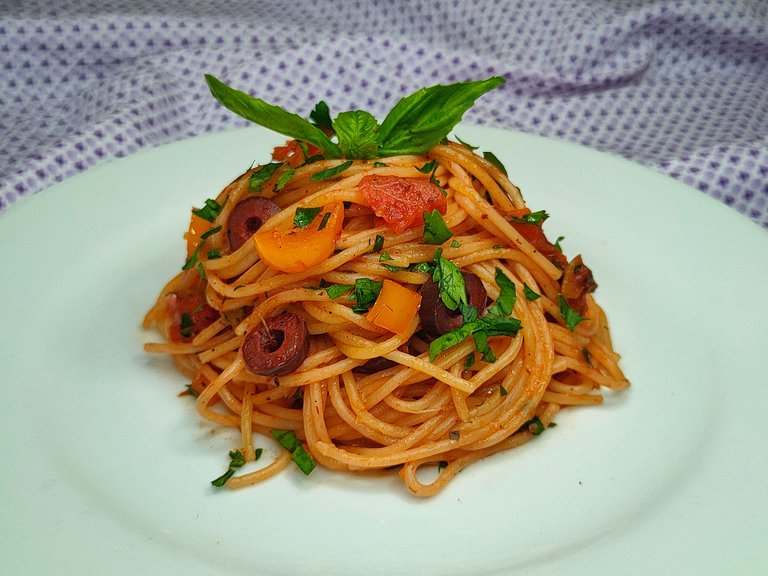
Las anchoas que compro, suelen ser anchoas en salmuera. Lo que hago es agregar aceite de oliva a las anchoas y una gota de salsa tabasco y las dejo un par de días así, para que se distribuyan bien los sabores en todo. Luego ese aceite es el que utilizo para preparar la salsa y, por supuesto, las anchoas. En cuanto a las aceitunas, puedes utilizar las que desees, aunque es cierto que Italia usan un tipo de aceituna que no es fácil de conseguir en otros países.
The anchovies I buy are usually anchovies in brine. What I do is add olive oil to the anchovies and a drop of Tabasco sauce and leave them like that for a couple of days, so that the flavors are well distributed throughout. Then that oil is what I use to prepare the sauce and, of course, the anchovies. As for the olives, you can use whatever you want, although it is true that Italy uses a type of olive that is not easy to find in other countries.
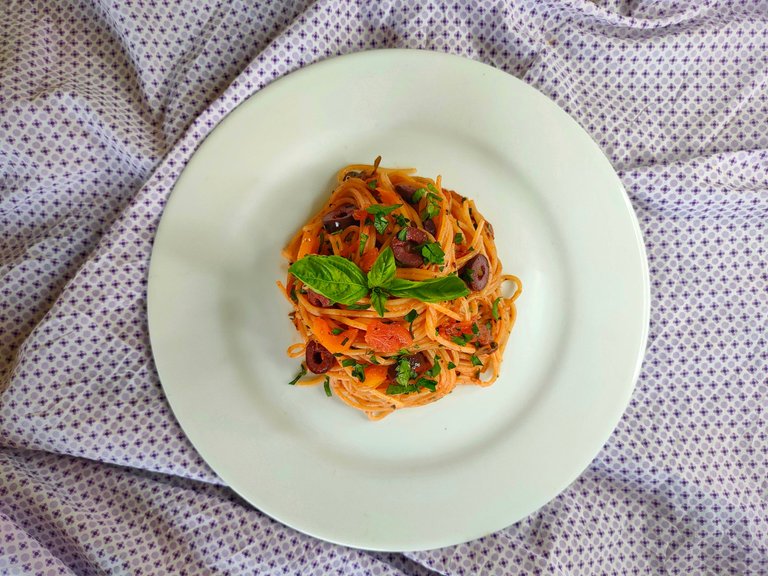
Si quieres aprender mi versión de salsa, estos son los ingredientes que yo utilicé:
If you want to learn my version of salsa, these are the ingredients I used:


Ingredientes || Ingredients
|
|


Preparación || Preparation
- En una paila, agregar el aceite de oliva, el ajo y las anchoas. Comenzar a cocinar hasta que las anchoas se desmenucen bastante. Cómo mencioné al inicio, yo agregué el aceite de oliva a las anchoas antes de usar y las dejé 2 días así. Seguido a eso, agregar el chile, las alcaparras, las aceitunas y el pimentón. Saltear un par de minutos.
- In a pan, add the olive oil, garlic and anchovies. Start cooking until the anchovies are quite crumbly. As I mentioned at the beginning, I added the olive oil to the anchovies before using and left them like this for 2 days. After that, add the chili, capers, olives and paprika. Sauté for a couple of minutes.
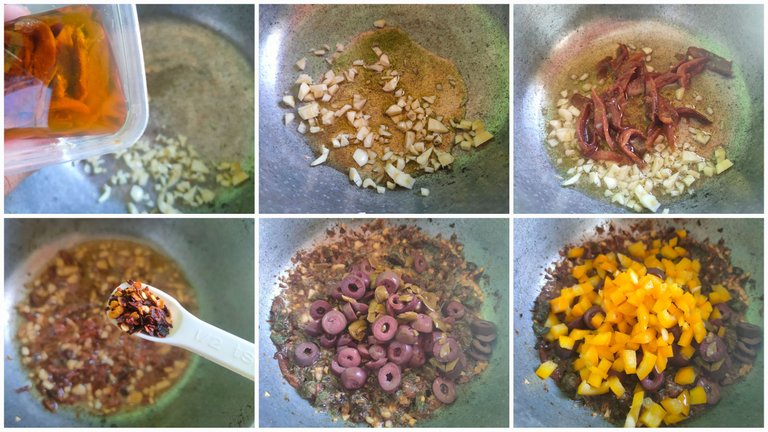
- Agregar el tomate y la salsa de tomate al sartén. El tomate va pelado, sin semillas y cortado en cuadros. Agregar también el resto de los ingredientes, junto a un poco del agua donde se están cocinando los espaguetis para diluir la salsa. Dejar cocinar hasta que reduzca y comience a espesar. El perejil se reserva.
- Add the tomato and tomato sauce to the pan. The tomato should be peeled, seeded and cut into squares. Add also the rest of the ingredients, together with a little of the water where the spaghetti is cooking to dilute the sauce. Let it cook until it reduces and begins to thicken. Set the parsley aside.
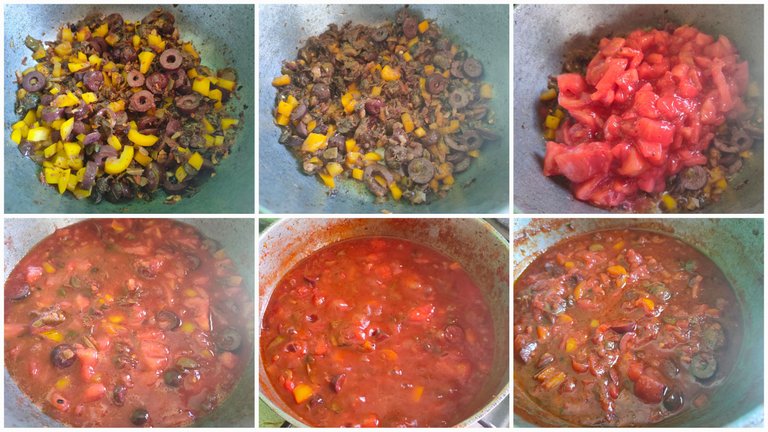
- Estando los espaguetis casi en su punto, agregar el perejil cortado bien chiquito, a la salsa y enseguida agregar los espaguetis, sin el agua, para que se terminen de cocinar casi un minuto en la salsa. Una vez listo, servir caliente.
- When the spaghetti is almost ready, add the parsley cut very small, to the sauce and then add the spaghetti, without the water, so that they finish cooking for about one minute in the sauce. Once ready, serve hot.
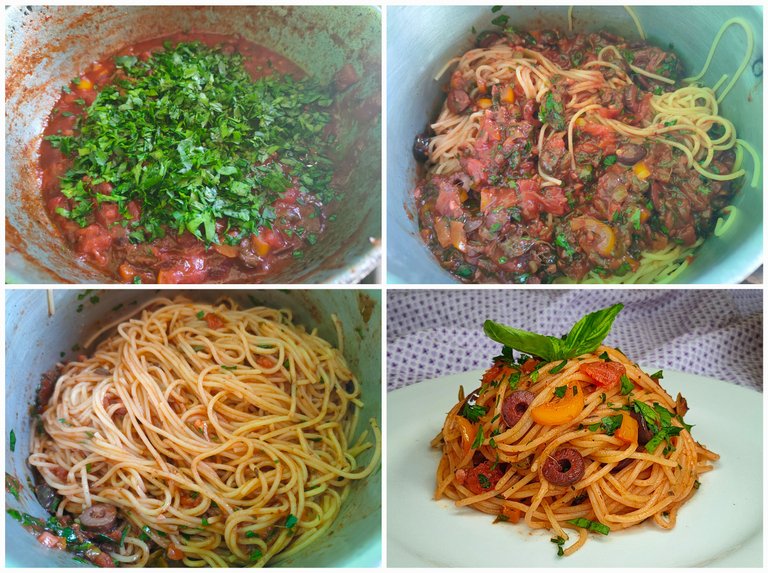
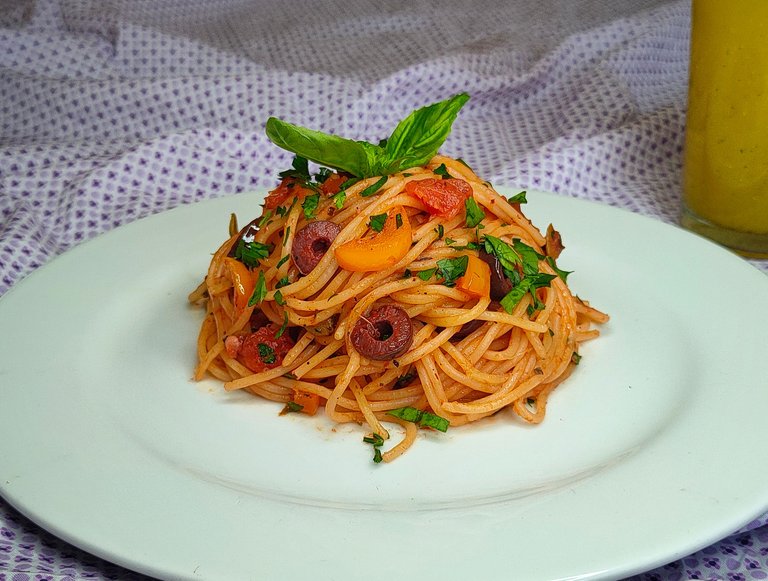
Ya con esto están listos los espaguetis a la puttanesca. Lo tradicional es utilizar espaguetis, esto si se quiere respetar el uso de las salsas y el tipo de pastas, pero siempre puedes utilizar la de tu preferencia. Es una salsa bastante sabrosa que incluso se puede comer con pan tostado o galletas saladas. También se puede sustituir el perejil por albahaca y la salsa adquiere otra tonalidad de sabor. Adicional preparé una bebida de maracuyá con hierba buena, que luego les cuento sobre eso.
Now the spaghetti puttanesca is ready. The traditional way is to use spaghetti, this if you want to respect the use of sauces and the type of pasta, but you can always use the one of your preference. It is a very tasty sauce that can even be eaten with toasted bread or crackers. You can also substitute the parsley for basil and the sauce acquires another tonality of flavor. I also prepared a passion fruit drink with good herbs, which I will tell you about later.
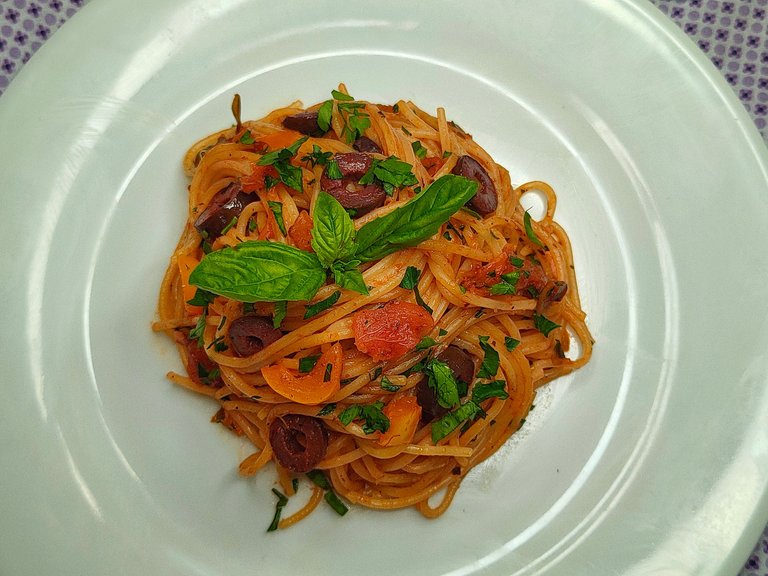
Déjame saber en los comentarios si has comido espaguetis en salsa puttanesca y cuál ha sido tu experiencia. ¡Hasta una próxima receta!
Let me know in the comments if you've had spaghetti in puttanesca sauce and what your experience was, until a future recipe!

Todas las fotografías fueron tomadas por mí con un Realme 7 pro. No autorizo a nadie reutilizarlas. Esta publicación fue escrita en español y luego traducida al inglés.
All photographs were taken by me with a Realme 7 pro. I do not authorize anyone to reuse them. This publication was written in Spanish and then translated into English.